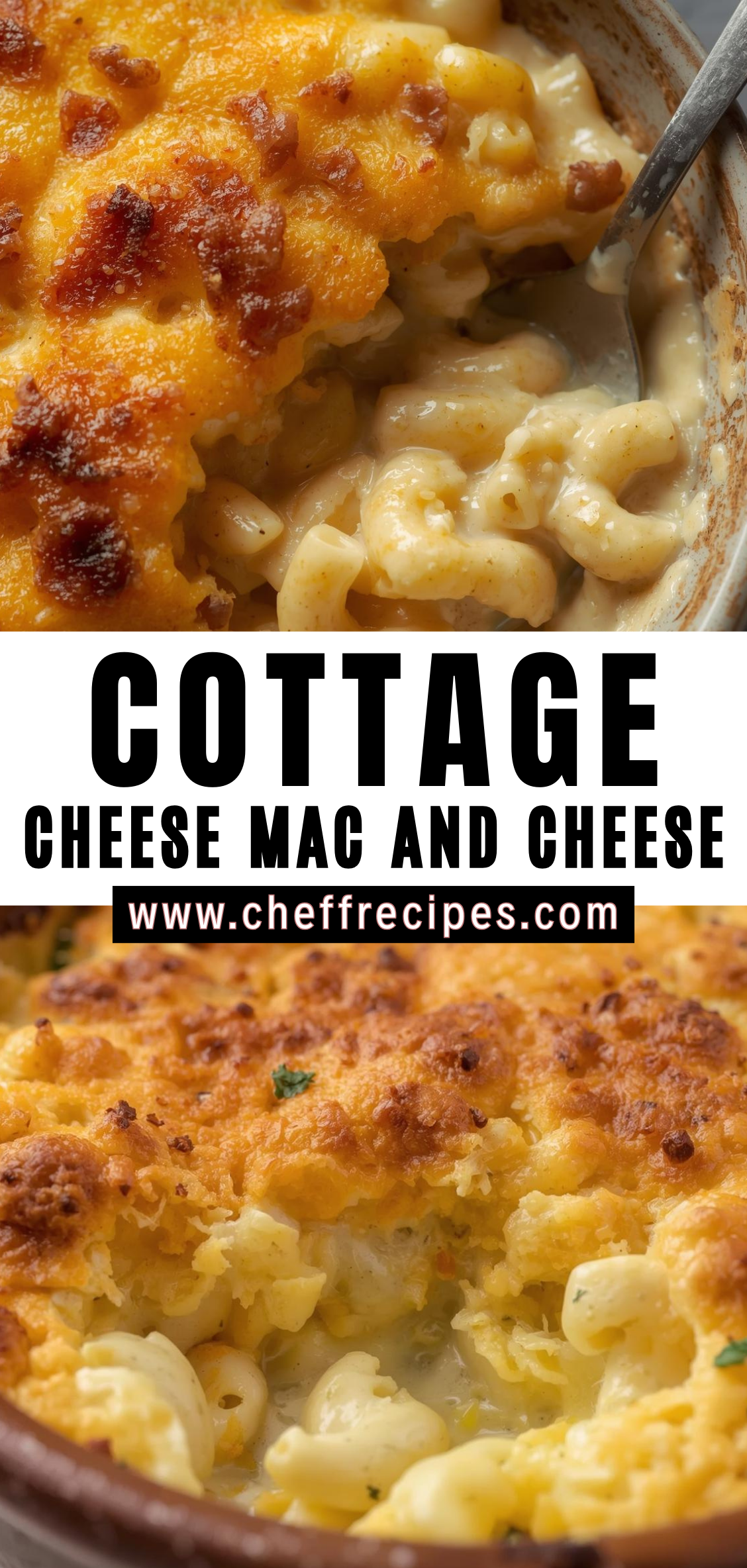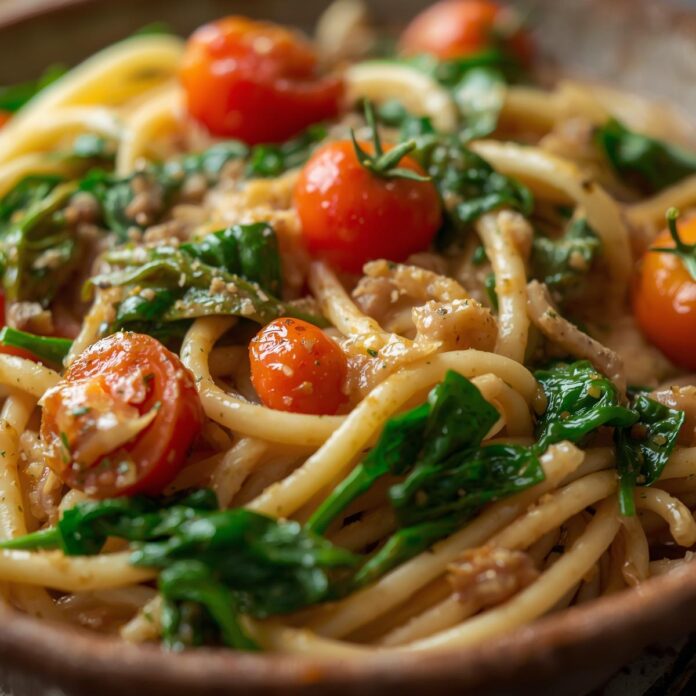Mac and cheese is a dish that evokes warmth, nostalgia, and comfort. Its creamy, cheesy texture, paired with tender pasta, has made it a beloved staple in kitchens across the world. While traditional mac and cheese often relies on sharp cheddar or processed cheese sauces, there exists a healthier, protein-packed variation that maintains the same indulgent creaminess without the heaviness—cottage cheese mac and cheese. By incorporating cottage cheese into the sauce, this version not only retains the rich, velvety texture that everyone loves but also adds a subtle tang and a boost of nutrition, making it a more balanced yet equally satisfying meal.

Cottage cheese is a versatile ingredient that has long been celebrated for its mild flavor, high protein content, and creamy texture. When blended into a sauce, it transforms into a silky, luscious base that clings beautifully to pasta. Unlike heavy cream or a purely cheese-based sauce, cottage cheese provides a lightness that allows the dish to feel indulgent without being overly rich or greasy. It also lends itself to a variety of flavor adaptations, from classic cheddar-based recipes to more adventurous additions like smoked paprika, mustard, or nutmeg.
One of the key advantages of cottage cheese mac and cheese is its accessibility. Cottage cheese is widely available, easy to work with, and forgiving in recipes. Unlike some cheeses that require careful melting and tempering, cottage cheese blends smoothly with other ingredients, creating a creamy sauce in minutes. It also provides a subtle tang that balances the natural sweetness of milk and the mild saltiness of other cheeses, resulting in a flavor profile that is both comforting and nuanced.
Beyond taste and texture, cottage cheese mac and cheese is a nutritionally appealing option. Traditional mac and cheese can be high in fat and calories, but using cottage cheese increases the protein content significantly while reducing saturated fat. Protein is essential for muscle repair, satiety, and overall wellness, making this version an excellent choice for families, athletes, or anyone seeking a more balanced comfort food. Additionally, cottage cheese contains calcium, phosphorus, and B vitamins, contributing to bone health and energy metabolism, while pasta provides carbohydrates for energy, making this dish a complete and satisfying meal.
This recipe is also remarkably versatile. It can serve as a quick weeknight dinner, a hearty lunch, or a comforting side dish for holiday meals and gatherings. The base of cottage cheese and pasta allows for countless variations: add cooked vegetables for a boost of fiber and color, incorporate spices for complexity, or top with breadcrumbs for a crunchy finish. The dish can be baked or served stovetop, offering flexibility depending on time, preference, or available kitchen equipment.
Culinary technique plays an important role in achieving the ideal cottage cheese mac and cheese. The sauce must be blended to a smooth consistency, the pasta cooked perfectly al dente, and the seasoning balanced so that each bite is creamy, flavorful, and satisfying. Attention to these details ensures a finished dish that is greater than the sum of its parts—comforting, indulgent, and nourishing all at once.
Preparing cottage cheese mac and cheese also encourages engagement with the process of cooking itself. From selecting the best cheeses to blending the sauce and adjusting seasonings, each step offers an opportunity to explore flavors, textures, and cooking techniques. It is a dish that teaches patience, attention to detail, and the joy of transforming simple, wholesome ingredients into something truly special.
In the sections that follow, you will find detailed guidance on ingredient selection, preparation techniques, step-by-step cooking instructions, seasoning tips, and serving suggestions. Each component is designed to help you create a cottage cheese mac and cheese that is creamy, flavorful, and perfectly textured. By the end of this guide, you will not only have mastered a healthier take on a classic comfort food, but also gained insight into techniques that can enhance many other creamy, cheese-based dishes.
Ingredients Preparation and Selection
Before cooking, careful ingredient selection and preparation are essential for achieving creamy, flavorful mac and cheese. Each component plays a specific role in texture, taste, and nutritional balance.
Selecting the Pasta
Pasta is the backbone of this dish, and its choice affects both texture and sauce absorption:
-
Type: Elbow macaroni is the classic choice, but other small shapes like shells, rotini, or penne work well. The hollow or twisted shapes help hold the sauce.
-
Quality: Use high-quality durum wheat pasta for a firm, al dente bite. Fresh pasta can be used, but reduce cooking time accordingly.
-
Cooking tip: Cook pasta slightly under al dente if baking afterward. It will finish cooking in the oven without becoming mushy.
Selecting Cottage Cheese
Cottage cheese provides the creamy, protein-rich base for the sauce:
-
Consistency: Choose small-curd cottage cheese for a smoother texture; large curds can be blended if desired.
-
Fat content: Low-fat or full-fat options work, but full-fat cottage cheese gives a richer sauce.
-
Preparation: Drain excess liquid to prevent a watery sauce, or blend with milk to adjust consistency.
Selecting Cheese for Flavor
Cottage cheese provides creaminess, but additional cheese adds depth of flavor:
-
Cheddar: Sharp or mild, freshly grated for smooth melting.
-
Mozzarella: Adds stringy, gooey texture for indulgence.
-
Parmesan: Optional, for nutty, salty complexity.
-
Grating tip: Pre-grated cheeses often contain anti-caking agents, which can affect melting. Freshly grated cheese is ideal.
Milk and Seasonings
These ingredients help create a smooth, flavorful sauce:
-
Milk: Whole milk gives creaminess; 2% can be used for a lighter version.
-
Butter: Adds richness and helps bind the sauce.
-
Seasonings: Salt, black pepper, garlic powder, onion powder, and a pinch of nutmeg enhance the flavor. Optional paprika or mustard powder adds subtle depth.
Preparing the Pasta
-
Boil water: Bring a large pot of salted water to a rolling boil—roughly 1 tablespoon salt per 4 cups of water.
-
Cook pasta: Add pasta and stir occasionally to prevent sticking. Cook until just under al dente, typically 1–2 minutes less than package instructions.
-
Reserve pasta water (optional): Save ¼ cup to thin the sauce if necessary.
-
Drain pasta: Do not rinse, as the starch helps the sauce adhere to the pasta.
Preparing the Cottage Cheese Sauce
-
Blend cottage cheese: For a smooth sauce, blend the cottage cheese with a splash of milk in a blender or food processor until creamy. This step ensures no curds remain in the final dish, unless you prefer a chunkier texture.
-
Melt butter: In a medium saucepan over medium heat, melt 2–3 tablespoons of butter.
-
Add seasonings: Stir in garlic powder, onion powder, and a pinch of nutmeg, allowing the flavors to bloom in the butter for 30–60 seconds.
-
Combine cheeses: Add the blended cottage cheese and shredded cheddar to the saucepan, stirring constantly. Heat gently—do not boil—to prevent curdling.
-
Adjust consistency: Stir in milk gradually until the sauce reaches the desired thickness. It should coat the back of a spoon smoothly.
-
Season to taste: Taste the sauce and add salt, pepper, or additional spices as needed.
Combining Pasta and Sauce
-
Mix pasta and sauce: Add the drained pasta to the cheese sauce, stirring until all pieces are evenly coated.
-
Check consistency: If the sauce feels too thick, add a tablespoon of reserved pasta water at a time until smooth.
-
Taste and adjust: Ensure the balance of salt, pepper, and seasoning is to your preference before proceeding to baking.
Baking (Optional but Recommended)
-
Preheat oven: Set to 350°F (175°C).
-
Transfer to baking dish: Lightly butter a casserole dish and pour in the pasta and sauce mixture.
-
Add topping (optional): Sprinkle with additional shredded cheddar, mozzarella, or a mixture of breadcrumbs and Parmesan for a crunchy crust.
-
Bake: Place in the oven for 20–25 minutes, until the top is golden brown and bubbly.
-
Cool slightly: Allow the dish to rest for 5–10 minutes before serving; this helps the sauce thicken slightly and makes portioning easier.
Serving Suggestions
-
Serve with a simple green salad or roasted vegetables for a balanced meal.
-
Garnish with chopped fresh parsley or chives for color and freshness.
-
Leftovers can be reheated gently on the stovetop or in the oven, adding a splash of milk to restore creaminess.
Cottage Cheese Mac and Cheese
Mac and cheese is a dish that evokes warmth, nostalgia, and comfort. Its creamy, cheesy texture, paired with tender pasta, has made it a beloved staple in kitchens across the world. While traditional mac and cheese often relies on sharp cheddar or processed cheese sauces, there exists a healthier, protein-packed variation that maintains the same indulgent creaminess without the heaviness—cottage cheese mac and cheese. By incorporating cottage cheese into the sauce, this version not only retains the rich, velvety texture that everyone loves but also adds a subtle tang and a boost of nutrition, making it a more balanced yet equally satisfying meal.
Ingredients
- Elbow macaroni or pasta of choice: 12 oz (about 340 g)
- Cottage cheese (small curd): 1 cup
- Cheddar cheese: 1 1/2 cups, shredded
- Milk: 1/2 cup (adjust for creaminess)
- Butter: 2 tbsp
- All-purpose flour: 2 tbsp
- Salt: 1 tsp (or to taste)
- Black pepper: 1/2 tsp
- Mustard powder: 1/2 tsp (optional, for flavor)
- Paprika or smoked paprika: 1/4 tsp (optional, for garnish)
Instructions
- Cook pasta: Bring a large pot of salted water to a boil. Cook pasta according to package directions until al dente. Drain and set aside.
- Make cheese sauce base: In the same pot or a large skillet, melt butter over medium heat. Stir in flour and cook 1–2 minutes until lightly golden (this makes a roux).
- Add milk: Gradually whisk in milk until smooth and slightly thickened, about 3–4 minutes.
- Add cheeses: Reduce heat to low. Stir in cottage cheese and shredded cheddar until melted and creamy. Season with salt, pepper, and mustard powder if using.
- Combine pasta and sauce: Add cooked pasta to the cheese sauce. Stir gently until fully coated.
- Serve: Sprinkle with paprika if desired. Serve warm.
Notes
- Texture tip: Using small-curd cottage cheese gives a creamy texture without being too lumpy.
- Make it baked: Pour mac and cheese into a greased baking dish, top with extra cheddar or breadcrumbs, and bake at 350°F (175°C) for 15–20 minutes until golden.
- Add-ins: Cooked bacon, sautéed onions, or steamed broccoli can be mixed in for extra flavor and nutrition.



